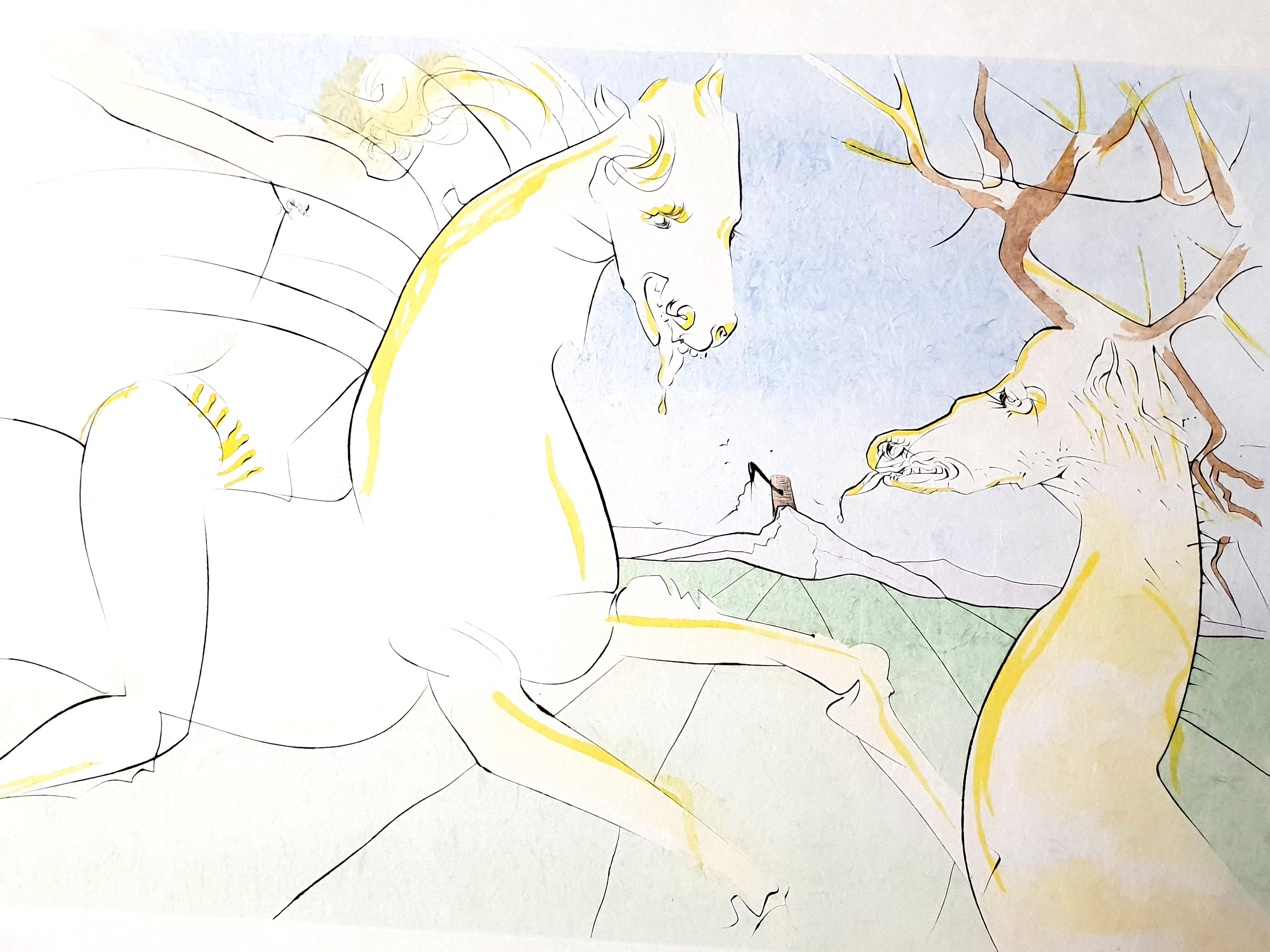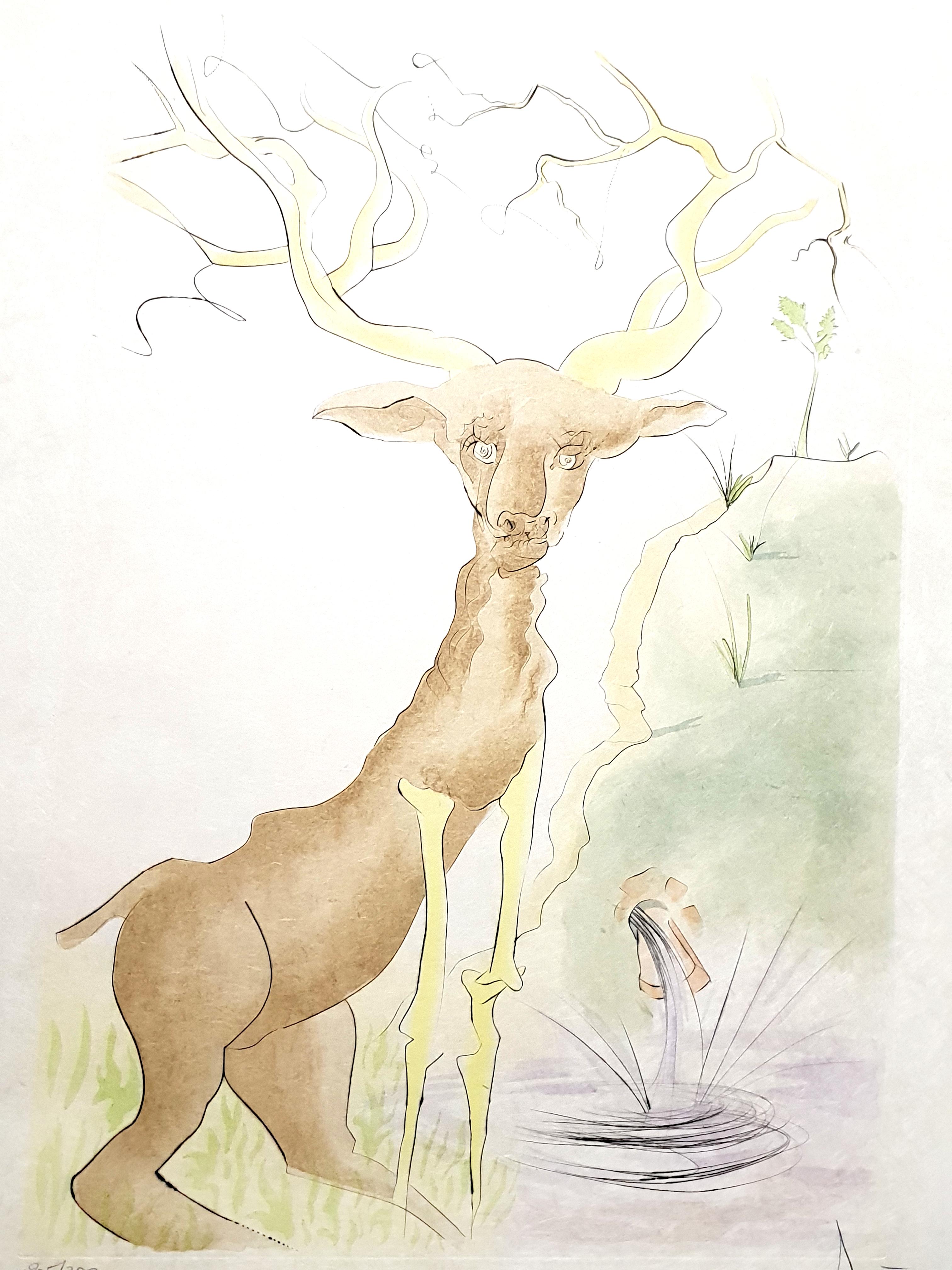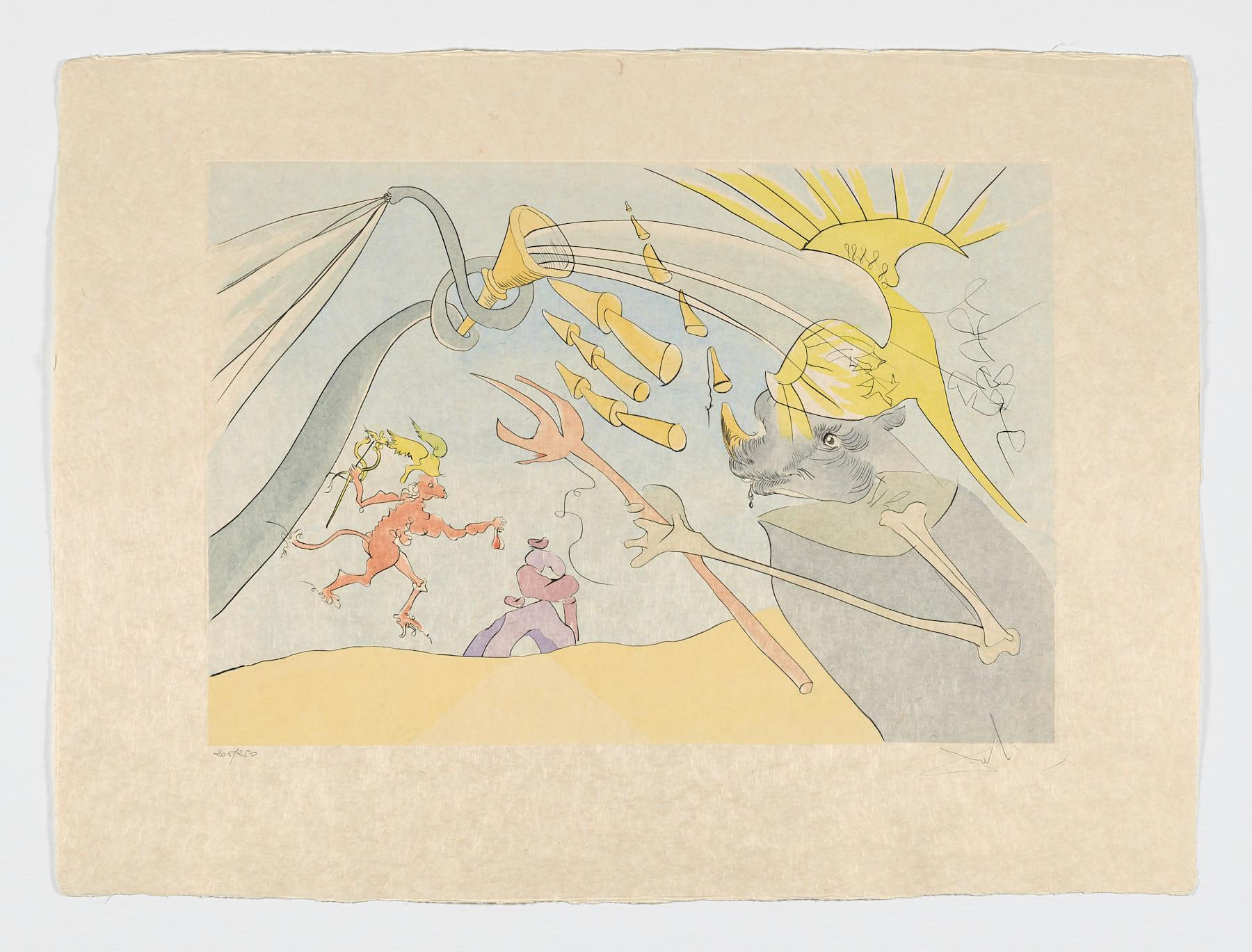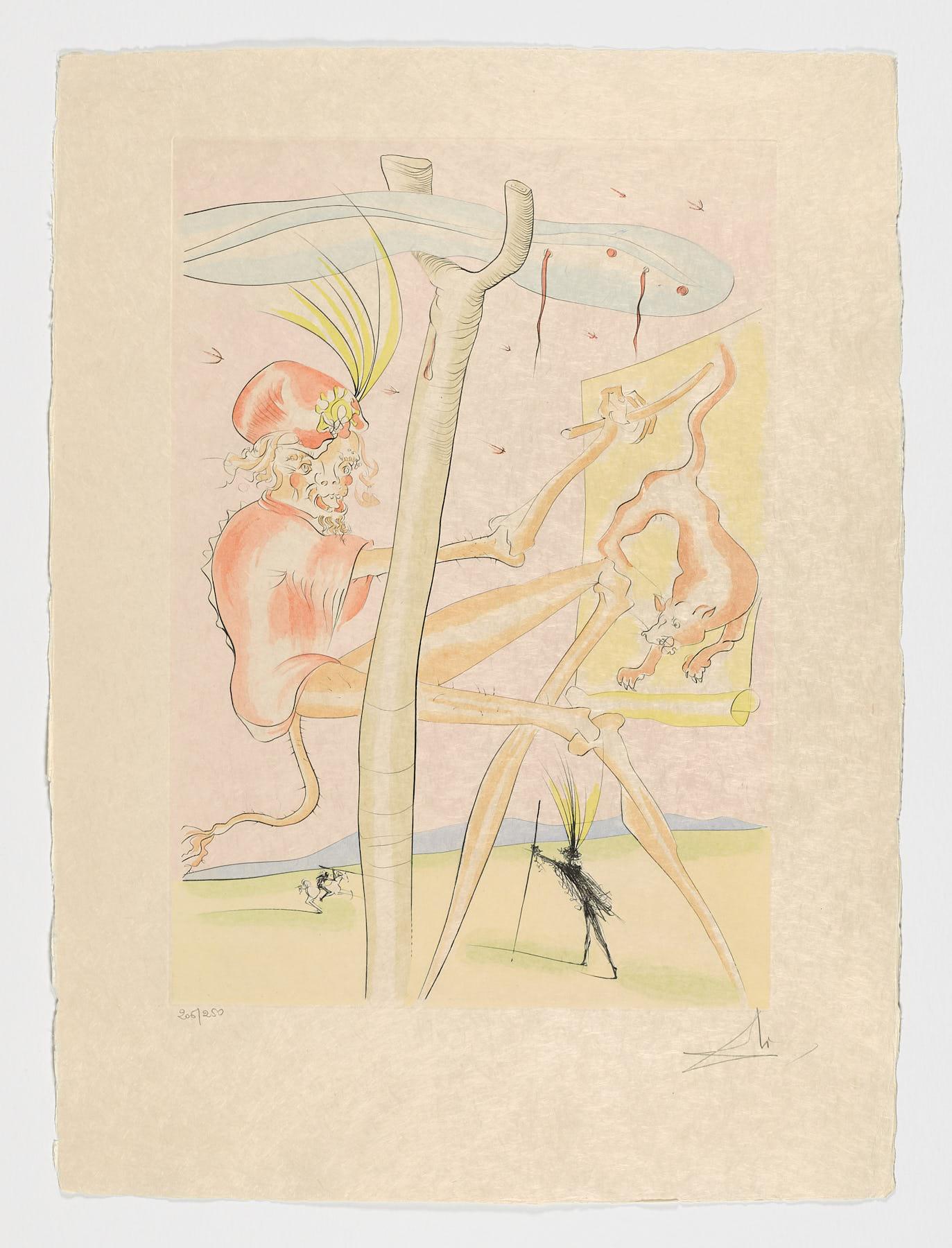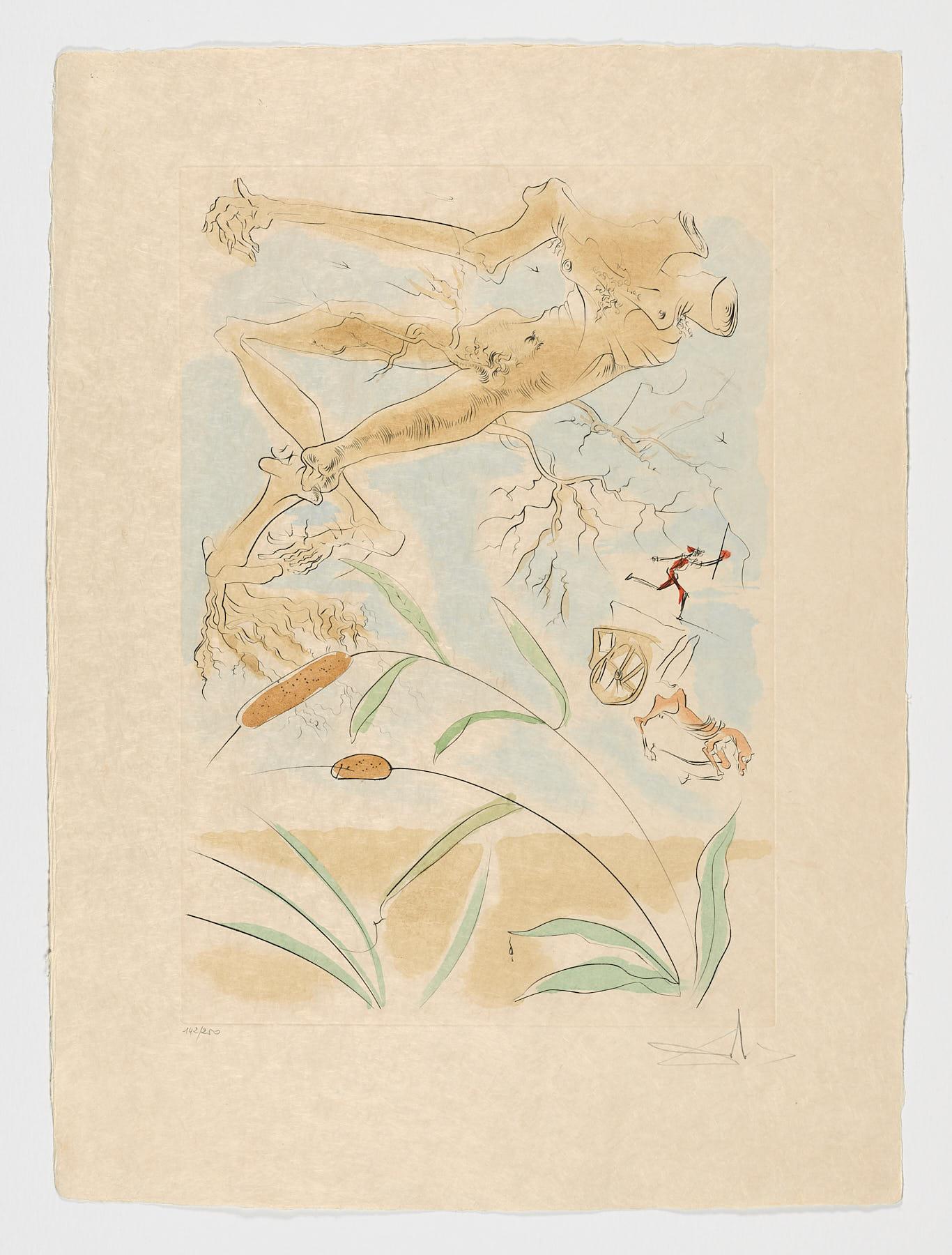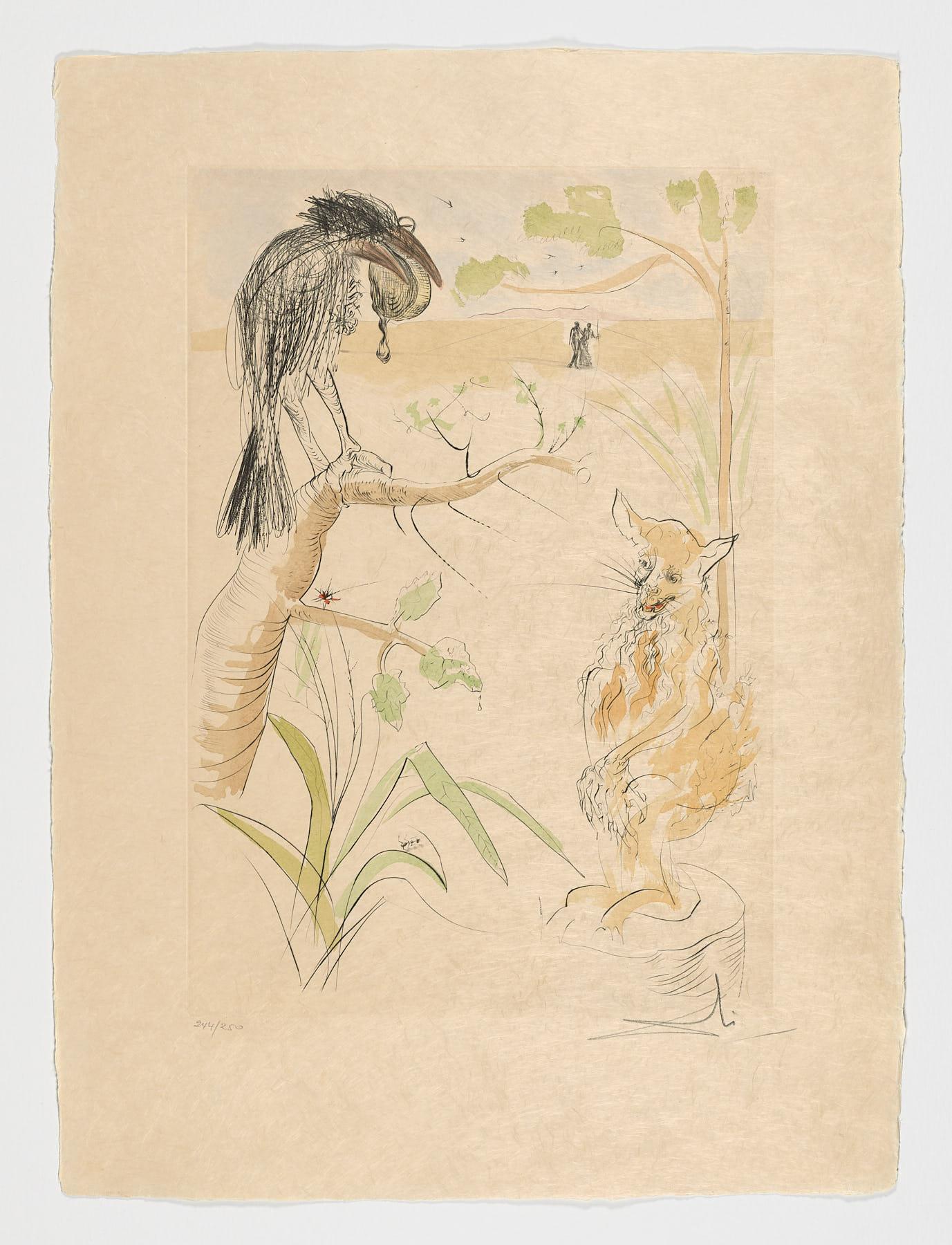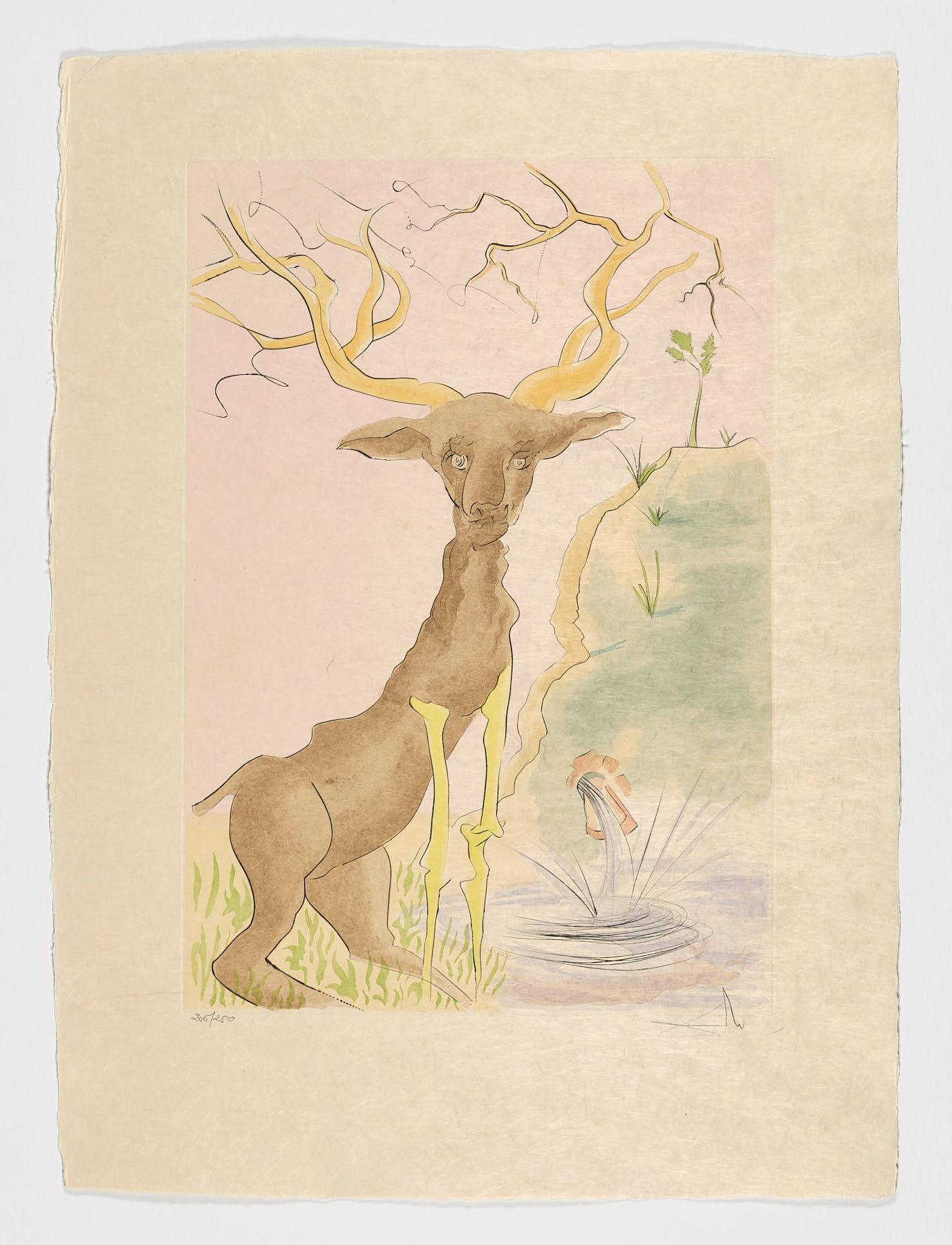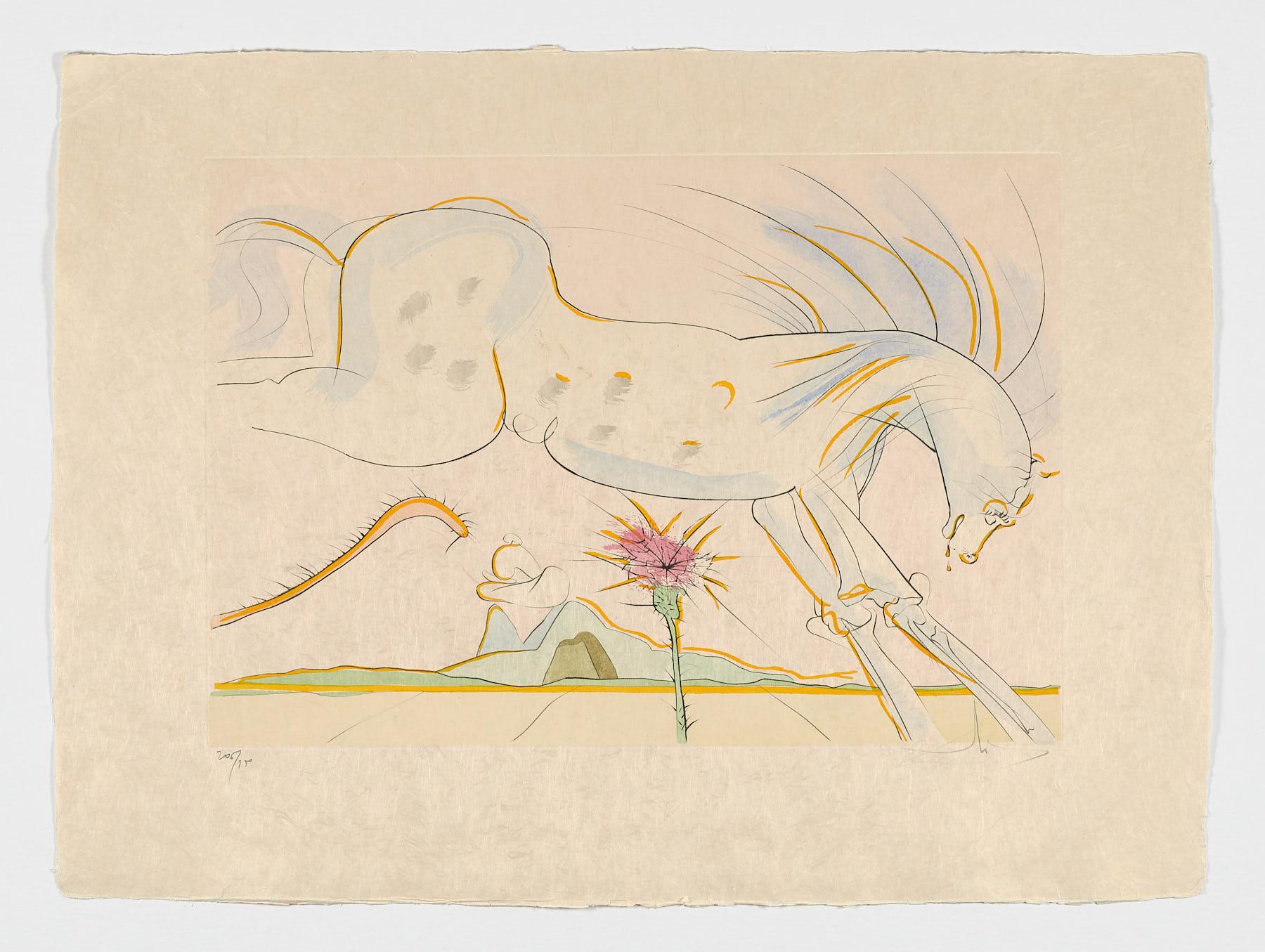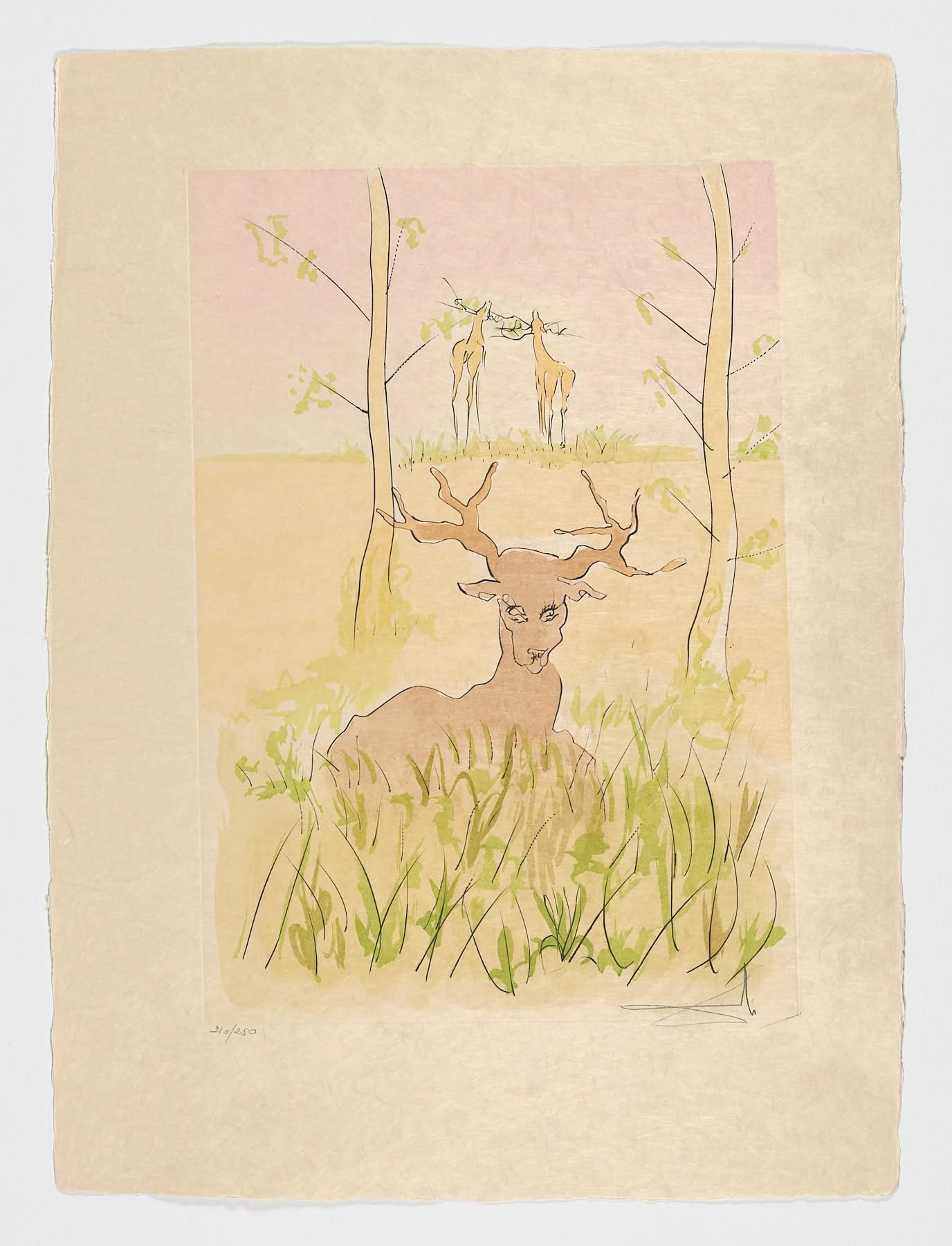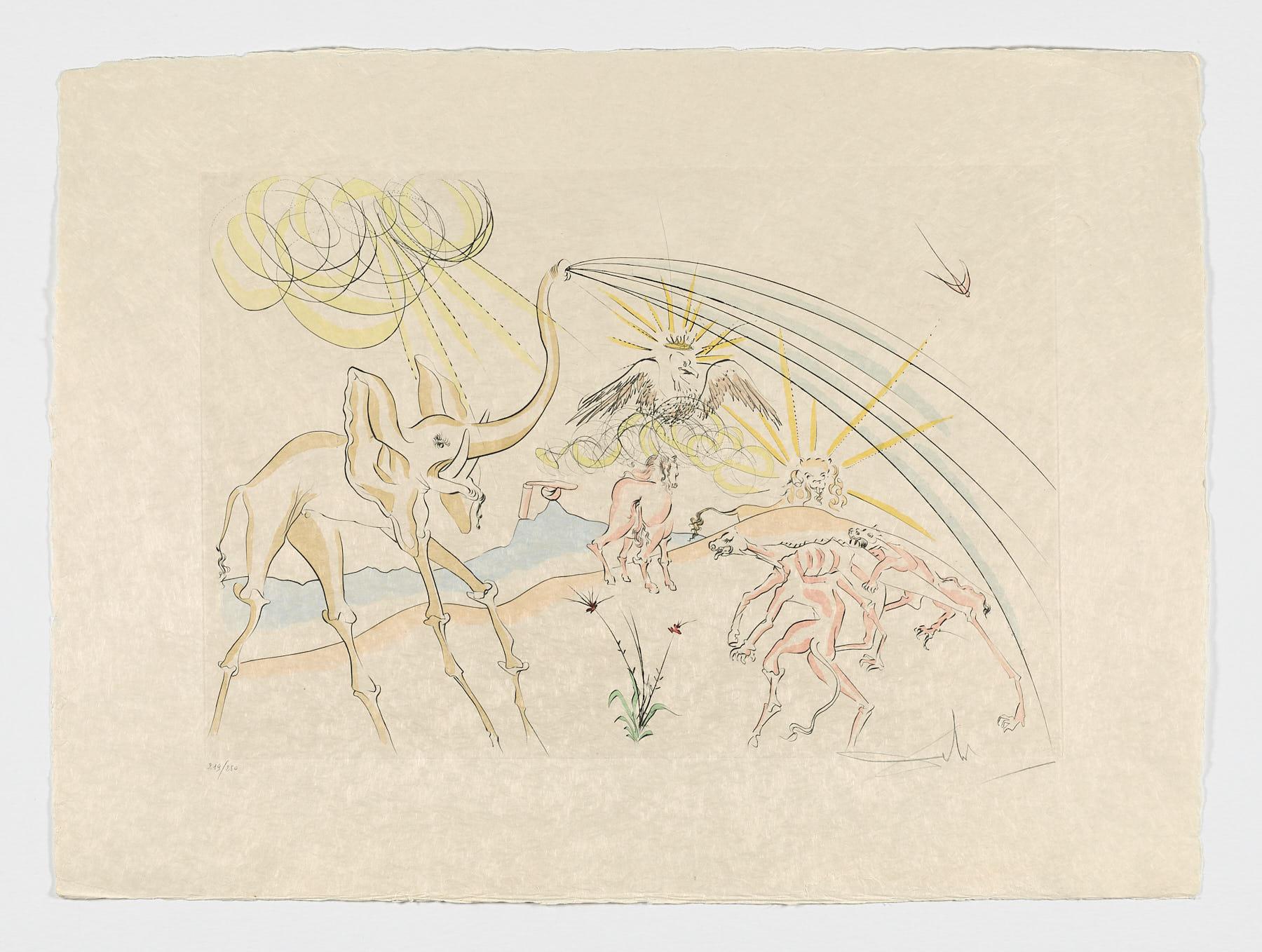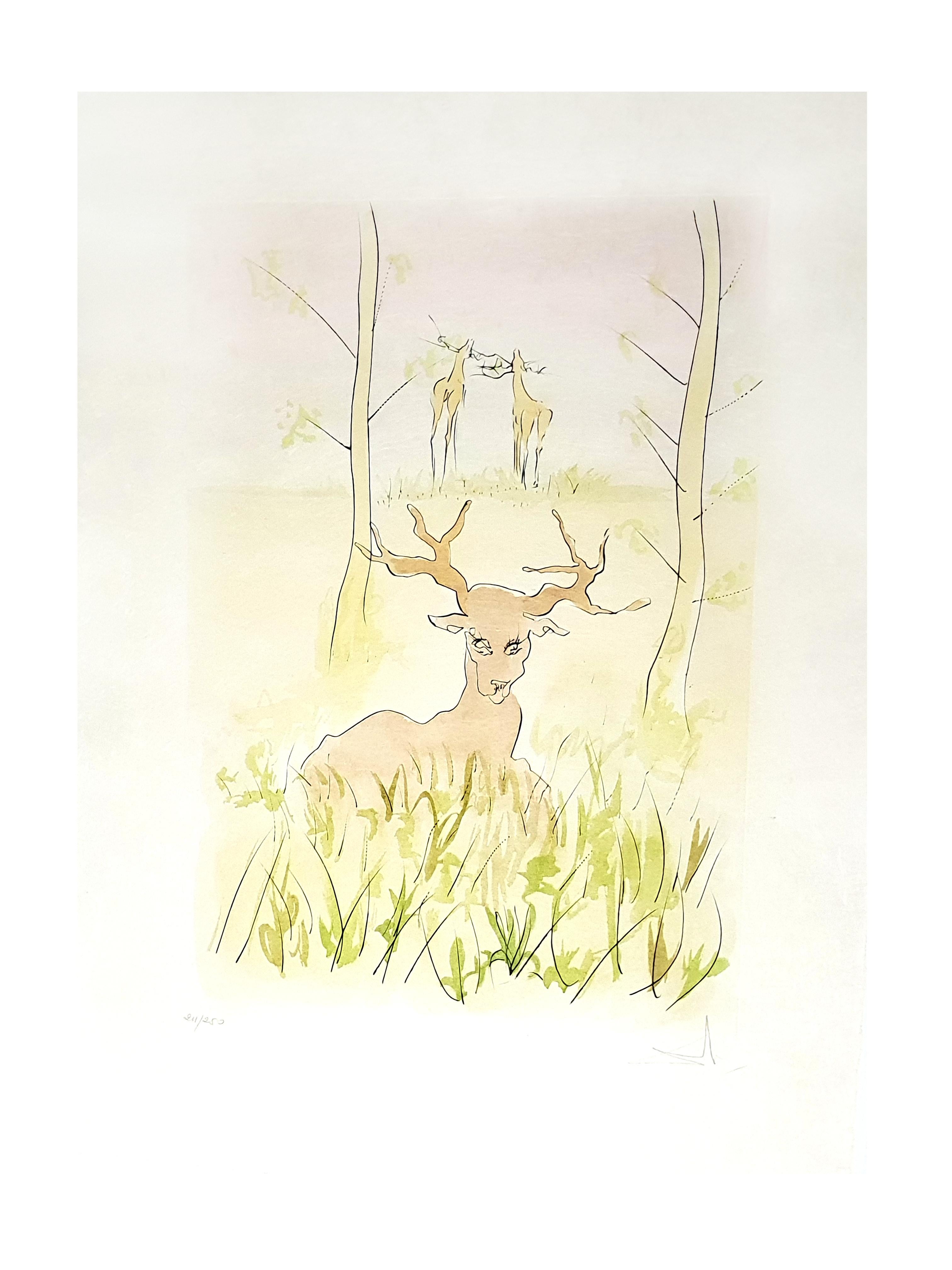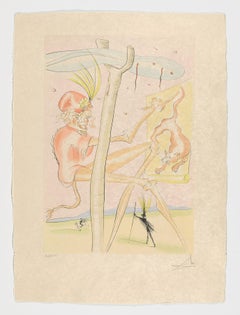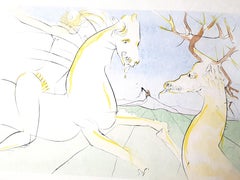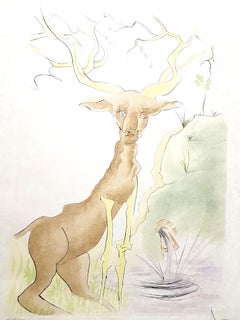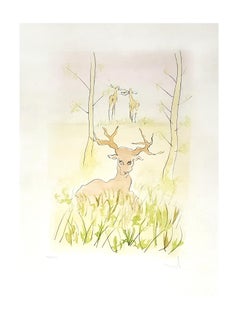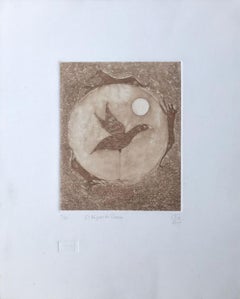
Pablo Weisz Carrington, "El pájaro de perros", 2017, Sugarlift, 19.5x15.7 in
View Similar Items
Want more images or videos?
Request additional images or videos from the seller
1 of 5
Pablo Weisz CarringtonPablo Weisz Carrington, "El pájaro de perros", 2017, Sugarlift, 19.5x15.7 in2017
2017
About the Item
- Creator:Pablo Weisz Carrington (1947, Mexican)
- Creation Year:2017
- Dimensions:Height: 19.5 in (49.53 cm)Width: 15.7 in (39.88 cm)
- Medium:
- Movement & Style:
- Period:
- Condition:
- Gallery Location:Miami, FL
- Reference Number:1stDibs: LU1854211974982
About the Seller
5.0
Vetted Seller
These experienced sellers undergo a comprehensive evaluation by our team of in-house experts.
Established in 2000
1stDibs seller since 2022
62 sales on 1stDibs
Typical response time: 1 to 2 days
More From This SellerView All
- Spanish Artist hand signed limited edition original art print drypoint n7By Salvador DalíLocated in Miami, FLSalvador Dali (Spain, 1904-1989) 'La Cour du Lion', 1974 Serie: Le Bestiaire de La Fontaine dry point, aquatint on japanese paper 30.6 x 22.7 in. (77.5 x 57.5 cm.) Edition of 250 Unframed ID: DAL2001-007 Hand-signed by author It appears reviewed in the catalog raisonné: The official catalog of the graphic works of Salvador Dalí. Albert Field. Page: 2/93. Nr. 74-1 J. ______________________________________________________ Salvador Felipe Jacinto Dalí i Domènech was a Spanish painter, sculptor, engraver, set designer and writer of the 20th century. An artist associated with surrealism, he is one of the most important figures in 20th century art, representing the archetype of the spectacular contemporary multifaceted artist. He develops his creative activity in various fields through the most diverse cultural formulas: painting, written media, performing arts, cinema, or public appearances in the press, radio, cinema, advertising, television, etc. Master of the most refined pictorial technique, especially drawing, along with various aesthetic languages - from impressionism, cubism, purism or late ultraism with Dadaist edges to the most radical surrealism, hyperrealism, pop-art or art optical—, will absorb every influence that is useful to build its own and personal language, halfway between technical tradition and thematic avant-garde. His paranoid-critical method is his main contribution to the surrealist movement and to the history of art as a new creative model with which Dalí's theories acquire theoretical entity - thanks to the successive interpretations that the Empordà artist made of his readings of Dalí's work. Sigmund Freud—and practice, applying it as a revealing liquid of images that can be represented plastically through multiple images, anamorphisms, relational mirages, irrational and heterogeneous symbolic images, pseudohallucinations, childhood memories, atavisms, obsessive ideas, etc., and recreating a polyphonic method capable of critically relating any visual or sensitive experience. With his method, Dalí makes paranoid delirium a whole mode of expression of an art that introduces us to the concrete irrationality that inhabits every creative process, constructing not only his works, but also his own character. as an artist. In Dalí, the relationship between his work and his personal history becomes evident. Much of the most significant biographical facts for the artist are implicitly or explicitly present in the content of his work and are the explanation of his complex and contradictory personality. In 1910, at the age of 6, he was enrolled by his father in the Hispano-French school of the Immaculate Conception of Figueres, where he learned French, his future language of culture. Dalí's first contact with Impressionism occurred in 1916, when he spent some time on the outskirts of Figueres, specifically at the Molí de la Torre estate, property of the Pichot family (intellectuals and artists), where he was the collection of the painter Ramón Pichot. In 1919 he participated for the first time in a group exhibition in the halls of the Societat de Concerts, and with a group of friends from the institute founded the magazine Studium, in which he published his first writings. A year later he moved to Madrid to study at the School of Fine Arts. In 1922 he won his first prize at the Concurs-exposició d'obres d'art originals d'students, held at the Galeries Dalmau (Barcelona). This same year he attended the School of Painting, Sculpture and Engraving in Madrid (Royal Academy of Fine Arts of San Fernando), and lived in the Student Residence, where he became friends with prominent personalities such as Luis Buñuel, Federico García Lorca, Pedro Garfias , Eugenio Montes, or Pepín Bello. However, a year later he was expelled from the Academy for his rebellious and revolutionary character, accused of leading a protest. It would be in 1927 when his surrealist period began, after having traveled to the Netherlands and France, meeting Flemish painters and Picasso. In Paris itself, in 1929, through Joan Miró, he came into contact with a group of surrealists headed...Category
1970s Surrealist Prints and Multiples
MaterialsDrypoint, Paper, Aquatint
- Spanish Artist hand signed limited edition original art print drypoint n6By Salvador DalíLocated in Miami, FLSalvador Dali (Spain, 1904-1989) 'L’Elephant et le singe de Jupiter', 1974 Serie: Le Bestiaire de La Fontaine dry point, aquatint on japanese paper 22.9 x 30.8 in. (58 x 78 cm.) Edition of 250 Unframed ID: DAL2001-006 Hand-signed by author It appears reviewed in the catalog raisonné: The official catalog of the graphic works of Salvador Dalí. Albert Field. Page: 2/93. Nr. 74-1 B. ______________________________________________________ Salvador Felipe Jacinto Dalí i Domènech was a Spanish painter, sculptor, engraver, set designer and writer of the 20th century. An artist associated with surrealism, he is one of the most important figures in 20th century art, representing the archetype of the spectacular contemporary multifaceted artist. He develops his creative activity in various fields through the most diverse cultural formulas: painting, written media, performing arts, cinema, or public appearances in the press, radio, cinema, advertising, television, etc. Master of the most refined pictorial technique, especially drawing, along with various aesthetic languages - from impressionism, cubism, purism or late ultraism with Dadaist edges to the most radical surrealism, hyperrealism, pop-art or art optical—, will absorb every influence that is useful to build its own and personal language, halfway between technical tradition and thematic avant-garde. His paranoid-critical method is his main contribution to the surrealist movement and to the history of art as a new creative model with which Dalí's theories acquire theoretical entity - thanks to the successive interpretations that the Empordà artist made of his readings of Dalí's work. Sigmund Freud—and practice, applying it as a revealing liquid of images that can be represented plastically through multiple images, anamorphisms, relational mirages, irrational and heterogeneous symbolic images, pseudohallucinations, childhood memories, atavisms, obsessive ideas, etc., and recreating a polyphonic method capable of critically relating any visual or sensitive experience. With his method, Dalí makes paranoid delirium a whole mode of expression of an art that introduces us to the concrete irrationality that inhabits every creative process, constructing not only his works, but also his own character. as an artist. In Dalí, the relationship between his work and his personal history becomes evident. Much of the most significant biographical facts for the artist are implicitly or explicitly present in the content of his work and are the explanation of his complex and contradictory personality. In 1910, at the age of 6, he was enrolled by his father in the Hispano-French school of the Immaculate Conception of Figueres, where he learned French, his future language of culture. Dalí's first contact with Impressionism occurred in 1916, when he spent some time on the outskirts of Figueres, specifically at the Molí de la Torre estate, property of the Pichot family (intellectuals and artists), where he was the collection of the painter Ramón Pichot. In 1919 he participated for the first time in a group exhibition in the halls of the Societat de Concerts, and with a group of friends from the institute founded the magazine Studium, in which he published his first writings. A year later he moved to Madrid to study at the School of Fine Arts. In 1922 he won his first prize at the Concurs-exposició d'obres d'art originals d'students, held at the Galeries Dalmau (Barcelona). This same year he attended the School of Painting, Sculpture and Engraving in Madrid (Royal Academy of Fine Arts of San Fernando), and lived in the Student Residence, where he became friends with prominent personalities such as Luis Buñuel, Federico García Lorca, Pedro Garfias , Eugenio Montes, or Pepín Bello. However, a year later he was expelled from the Academy for his rebellious and revolutionary character, accused of leading a protest. It would be in 1927 when his surrealist period began, after having traveled to the Netherlands and France, meeting Flemish painters and Picasso. In Paris itself, in 1929, through Joan Miró, he came into contact with a group of surrealists headed...Category
1970s Surrealist Prints and Multiples
MaterialsDrypoint, Aquatint, Paper
- Spanish Artist hand signed limited edition original art print drypoint n9By Salvador DalíLocated in Miami, FLSalvador Dali (Spain, 1904-1989) 'Le Singe et le Léopard', 1974 Serie: Le Bestiaire de La Fontaine dry point, aquatint on japanese paper 30.8 x 22.7 in. (78 x 57.5 cm.) Edition of 25...Category
1970s Surrealist Prints and Multiples
MaterialsDrypoint, Paper, Aquatint
- Spanish Artist hand signed limited edition original art print drypoint n11By Salvador DalíLocated in Miami, FLSalvador Dali (Spain, 1904-1989) 'La Cerf Malade', 1974 Serie: Le Bestiaire de La Fontaine dry point, aquatint on japanese paper 30.6 x 22.9 in. (77.5 x 58 cm.) Edition of 250 Unfram...Category
1970s Surrealist Prints and Multiples
MaterialsDrypoint, Paper, Aquatint
- Spanish Artist hand signed limited edition original art print drypoint n8By Salvador DalíLocated in Miami, FLSalvador Dali (Spain, 1904-1989) 'La Cour du Lion', 1974 Serie: Le Bestiaire de La Fontaine dry point, aquatint on japanese paper 30.8 x 22.9 in. (78 x 58 cm.) Edition of 250 Unframed ID: DAL2001-008 Hand-signed by author It appears reviewed in the catalog raisonné: The official catalog of the graphic works of Salvador Dalí. Albert Field. Page: 2/93. Nr. 74-1 C. ______________________________________________________ Salvador Felipe Jacinto Dalí i Domènech was a Spanish painter, sculptor, engraver, set designer and writer of the 20th century. An artist associated with surrealism, he is one of the most important figures in 20th century art, representing the archetype of the spectacular contemporary multifaceted artist. He develops his creative activity in various fields through the most diverse cultural formulas: painting, written media, performing arts, cinema, or public appearances in the press, radio, cinema, advertising, television, etc. Master of the most refined pictorial technique, especially drawing, along with various aesthetic languages - from impressionism, cubism, purism or late ultraism with Dadaist edges to the most radical surrealism, hyperrealism, pop-art or art optical—, will absorb every influence that is useful to build its own and personal language, halfway between technical tradition and thematic avant-garde. His paranoid-critical method is his main contribution to the surrealist movement and to the history of art as a new creative model with which Dalí's theories acquire theoretical entity - thanks to the successive interpretations that the Empordà artist made of his readings of Dalí's work. Sigmund Freud—and practice, applying it as a revealing liquid of images that can be represented plastically through multiple images, anamorphisms, relational mirages, irrational and heterogeneous symbolic images, pseudohallucinations, childhood memories, atavisms, obsessive ideas, etc., and recreating a polyphonic method capable of critically relating any visual or sensitive experience. With his method, Dalí makes paranoid delirium a whole mode of expression of an art that introduces us to the concrete irrationality that inhabits every creative process, constructing not only his works, but also his own character. as an artist. In Dalí, the relationship between his work and his personal history becomes evident. Much of the most significant biographical facts for the artist are implicitly or explicitly present in the content of his work and are the explanation of his complex and contradictory personality. In 1910, at the age of 6, he was enrolled by his father in the Hispano-French school of the Immaculate Conception of Figueres, where he learned French, his future language of culture. Dalí's first contact with Impressionism occurred in 1916, when he spent some time on the outskirts of Figueres, specifically at the Molí de la Torre estate, property of the Pichot family (intellectuals and artists), where he was the collection of the painter Ramón Pichot. In 1919 he participated for the first time in a group exhibition in the halls of the Societat de Concerts, and with a group of friends from the institute founded the magazine Studium, in which he published his first writings. A year later he moved to Madrid to study at the School of Fine Arts. In 1922 he won his first prize at the Concurs-exposició d'obres d'art originals d'students, held at the Galeries Dalmau (Barcelona). This same year he attended the School of Painting, Sculpture and Engraving in Madrid (Royal Academy of Fine Arts of San Fernando), and lived in the Student Residence, where he became friends with prominent personalities such as Luis Buñuel, Federico García Lorca, Pedro Garfias , Eugenio Montes, or Pepín Bello. However, a year later he was expelled from the Academy for his rebellious and revolutionary character, accused of leading a protest. It would be in 1927 when his surrealist period began, after having traveled to the Netherlands and France, meeting Flemish painters and Picasso. In Paris itself, in 1929, through Joan Miró, he came into contact with a group of surrealists headed...Category
1970s Surrealist Prints and Multiples
MaterialsDrypoint, Paper, Aquatint
- Spanish Artist hand signed limited edition original art print drypoint n12By Salvador DalíLocated in Miami, FLSalvador Dali (Spain, 1904-1989) 'La Cerf se voyant dans l’eau', 1974 Serie: Le Bestiaire de La Fontaine dry point, aquatint on japanese paper 30.6 x 22.7 in. (77.5 x 57.5 cm.) Editi...Category
1970s Surrealist Prints and Multiples
MaterialsDrypoint, Paper, Aquatint
You May Also Like
- Salvador Dali - The Rider and the Deer - Handsigned EngravingBy Salvador DalíLocated in Collonge Bellerive, Geneve, CHSalvador Dali - The Rider and the Deer - Handsigned Engraving 1974 Hand signed by Dali Edition: /250 The dimensions of the image are 22.8 x 15.7 inches on 3...Category
1970s Surrealist Figurative Prints
MaterialsDrypoint, Aquatint
- Salvador Dali - Le Cerf from Le Bestiaire de la Fontaine - Signed EngravingBy Salvador DalíLocated in Collonge Bellerive, Geneve, CHSALVADOR DALI Le Cerf se voyant dans l'eau from Le Bestiaire de la Fontaine 1974 Hand signed by Dali Edition: /250 The dimensions of the image are 22.8 x 15.7 inches on 31 x 23.2 in...Category
1970s Surrealist Figurative Prints
MaterialsDrypoint, Aquatint
- Salvador Dali - Le Cerf from Le Bestiaire de la Fontaine - Signed EngravingBy Salvador DalíLocated in Collonge Bellerive, Geneve, CHSALVADOR DALI Le Cerf Malade from Le Bestiaire de la Fontaine 1974 Hand signed by Dali Edition: /250 The dimensions of the image are 22.8 x 15.7 inches on 31 x 23.2 inch paper Refer...Category
1970s Surrealist Figurative Prints
MaterialsDrypoint, Aquatint
- Salvador Dali - The Oak and the Reed - Signed EngravingBy Salvador DalíLocated in Collonge Bellerive, Geneve, CHSALVADOR DALI The Oak and the Reed (La chêne et le roseau) from Le Bestiaire de la Fontaine 1974 Hand signed by Dali Edition: /250 Conditions: A small tear defect has been restaured...Category
1970s Surrealist Figurative Prints
MaterialsDrypoint, Aquatint
- PegasusBy Salvador DalíLocated in New York, NYA very good impression of this etching and engraving with color aquatint. Signed, dated and numbered 132/150 in pencil by Dali. Published by Argillet, Paris. From "Mythologie." Cat...Category
1960s Surrealist Abstract Prints
MaterialsColor, Engraving, Etching, Aquatint
- A Tire d'AileLocated in San Francisco, CAThis artwork titled "A Tire d'Aile" 1986 is an original color etching with aquatint on Arches paper by French artist Jean Solombre, 1948-2005. It is hand...Category
Late 20th Century Surrealist Animal Prints
MaterialsEtching, Aquatint
